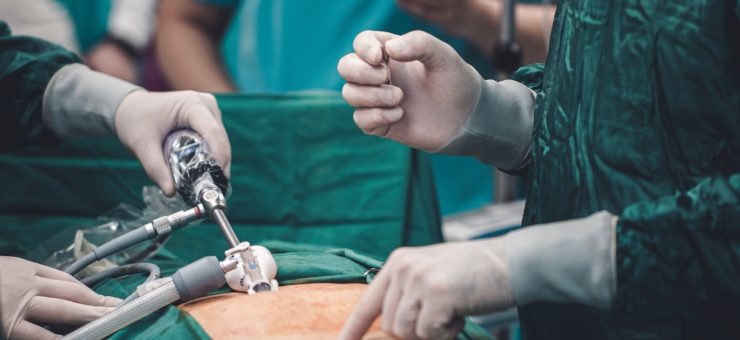Robot-assisted surgical trends in 2023 and beyond
14 December 2022
Robotic-assisted surgery has been making its way into the operating room (OR) for decades, boosting minimally invasive general surgery, enhancing orthopaedics, and enabling precision-guided catheter systems—with continued improvements leading to complex systems such as Intuitive’s market-leading da Vinci. The benefits of these systems are widely accepted: articulated tools and HD cameras provide surgeons with greater dexterity and visual feedback than ever before and when combined with smaller incisions, present fewer complications and shorter patient recovery time. So, it’s clear that robots are here to stay, but in what form? There are still significant challenges that specialist robotic developers will face in the years ahead, but we predict three key areas of innovation for robotics in the OR.
Smaller and more specialized
Historically, and perhaps due to the cost of development, time and effort have been concentrated on finding automated solutions for more general surgical procedures. Laparoscopic and orthopaedic procedures are a good example and have been the primary target for robotic-assisted surgery to date. However, as minimally invasive surgeries become more common, and their benefits widely accepted, we see a drive towards systems requiring smaller and fewer incisions—if any at all.
We feel that surgical robot development will start to concentrate on more niche surgical disciplines in the future. Developers are already focusing on single port systems, such as Intuitive’s SP or alternatives from Vicarious Surgical or Titan Medical, but these require large ports. We foresee a race to miniaturise the surgical end tools, requiring high levels of innovation, as simple scaling of current technology will only go so far. An alternate approach will be to develop more specialised systems, such as Virtuoso Surgical, providing a smaller robot that is tailored to only a subset of surgical procedures (rigid-endoscopic). We believe that this direction will target some of the harder surgeries increasing the availability of these more complex procedures.
Collaborative and remote surgery
Video assistance within keyhole surgery is already commonly used, but we see this going one step further with technology enabling surgeons to use augmented reality (AR) while operating. Image processing and machine learning are rapidly developing technologies that are commonly used outside the OR to aid doctors in tumour detection. We predict a move to incorporate this directly into the surgical space, with AR layered onto standard images allowing measurements, overlay of multiple imaging modes, and real-time image analysis when and where the surgeons need it most. Additionally, high-definition and magnified 3D vision provides depth perception for surgeons and will become the standard for any video-assisted surgery.
We predict these technological advances in the OR will drive collaborative surgery to the next level. Telesurgery, AR, and VR will enable multiple consultants from around the world to dial into the surgery, control the robot, offer advice, and give a final prognosis for a patient after just one combined procedure, instead of multiple sessions weeks apart.
Using VR for training
Virtual reality (VR) lends itself to training. The use of headsets and 3D cameras can give viewers and learners a bird’s eye view of the procedure and haptic feedback makes it more engaging and we predict that this will happen more and more. It can take thousands of hours to become a qualified surgeon, requiring many observations. VR will never replace being in the operating room, but for trainees, it can provide vital additional experience and increase their familiarity with complex surgery before entering the stressful environment of real surgery. For already qualified surgeons, it becomes a tool to continually learn and hone their skills as advances in robotics enable new and more complex procedures to be achieved.
Challenges
We believe that instruments for current robots do not go far enough to expand the use of the systems for multiple use cases. In some areas, an attachment or device could multiply the use cases for surgeons and expand the types of surgical procedures that could be performed. We hear from surgeons that the range of laparoscopic instruments is not available in the robotic systems and they would like to see an expansion of the technology that is already in use to enhance and enable robotics in other surgical procedures.
We are already seeing robotics and VR in training, but while consultant surgeons are receiving the training they use surgeries that might typically be performed by residents. This hinders the training of future surgeons and, since there are limited robots, there is not enough transfer of skills to other surgical teams. The technology is available, but training is the bottleneck.
We are excited for 2023 and beyond and the technological advances that can make surgeries safer and can help more people. With some innovative additions to current technology, surgical robots already in use could vastly increase access to more complex procedures.
At Springboard, we have designed surgical devices for our clients, and our multidisciplinary team of mechanical and software engineers, scientists and physicists can help design and develop surgical robots. If you have an idea or are working on enhancing a current surgical robot, please let us know how we can help.
Written by Joe Batley, Senior Physicist, Springboard


